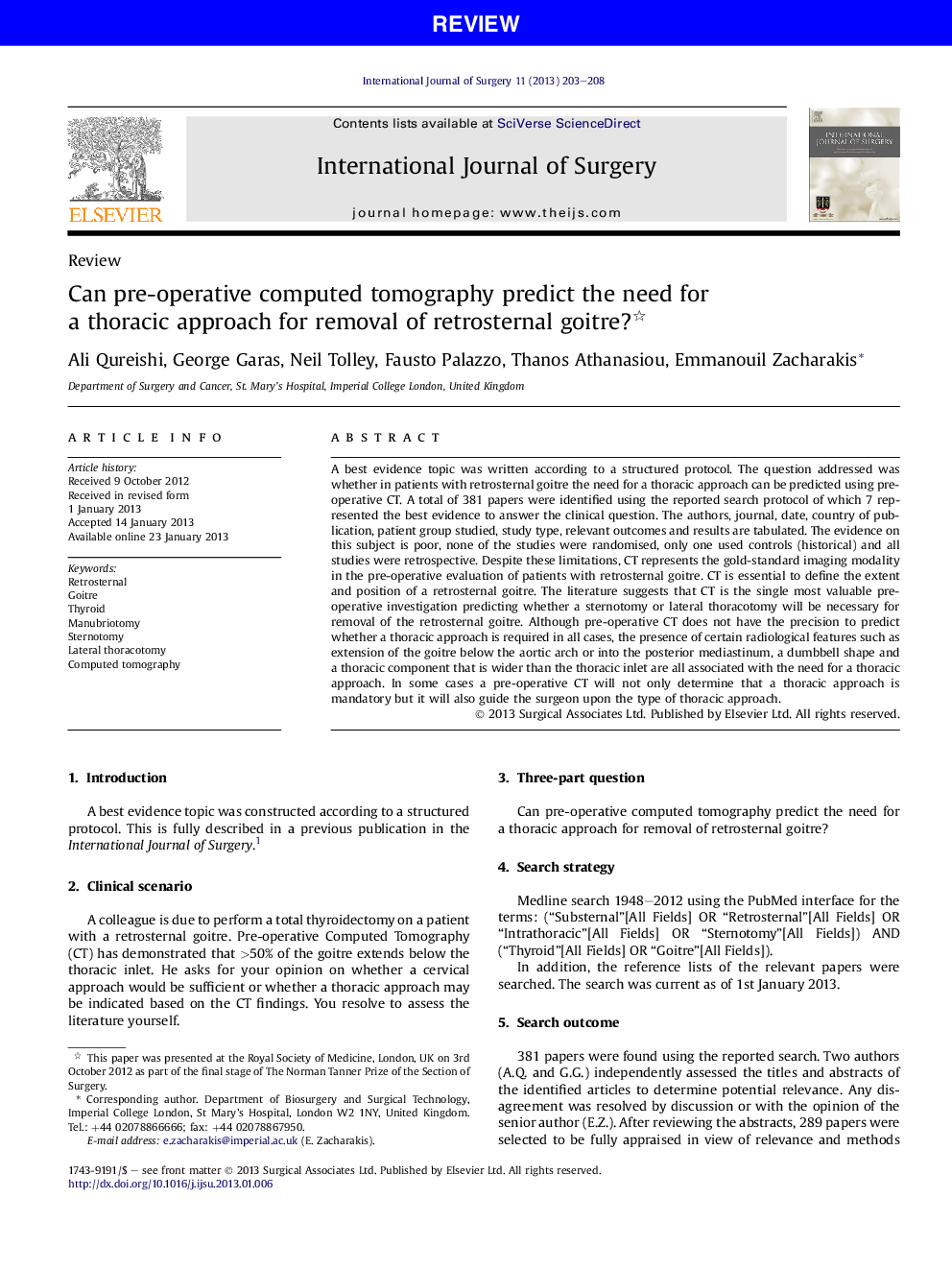| Article ID | Journal | Published Year | Pages | File Type |
|---|---|---|---|---|
| 4286789 | International Journal of Surgery | 2013 | 6 Pages |
A best evidence topic was written according to a structured protocol. The question addressed was whether in patients with retrosternal goitre the need for a thoracic approach can be predicted using pre-operative CT. A total of 381 papers were identified using the reported search protocol of which 7 represented the best evidence to answer the clinical question. The authors, journal, date, country of publication, patient group studied, study type, relevant outcomes and results are tabulated. The evidence on this subject is poor, none of the studies were randomised, only one used controls (historical) and all studies were retrospective. Despite these limitations, CT represents the gold-standard imaging modality in the pre-operative evaluation of patients with retrosternal goitre. CT is essential to define the extent and position of a retrosternal goitre. The literature suggests that CT is the single most valuable pre-operative investigation predicting whether a sternotomy or lateral thoracotomy will be necessary for removal of the retrosternal goitre. Although pre-operative CT does not have the precision to predict whether a thoracic approach is required in all cases, the presence of certain radiological features such as extension of the goitre below the aortic arch or into the posterior mediastinum, a dumbbell shape and a thoracic component that is wider than the thoracic inlet are all associated with the need for a thoracic approach. In some cases a pre-operative CT will not only determine that a thoracic approach is mandatory but it will also guide the surgeon upon the type of thoracic approach.
